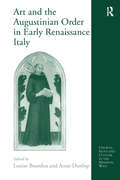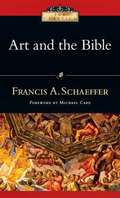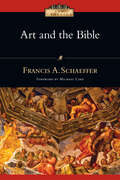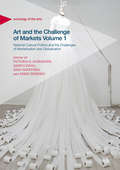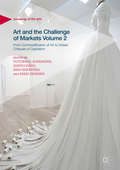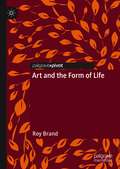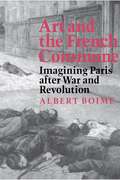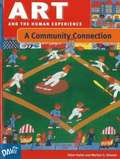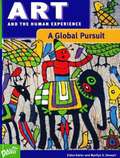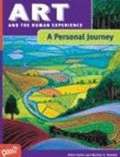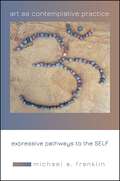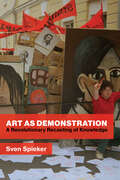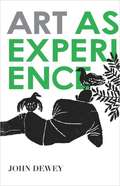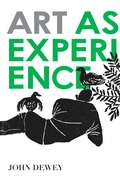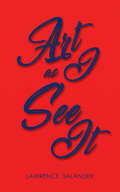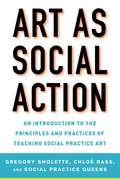- Table View
- List View
Art and the Augustinian Order in Early Renaissance Italy (Church, Faith and Culture in the Medieval West)
by Anne DunlopThe rise of the mendicant orders in the later Middle Ages coincided with rapid and dramatic shifts in the visual arts. The mendicants were prolific patrons, relying on artworks to instruct and impress their diverse lay congregations. Churches and chapels were built, and new images and iconographies developed to propagate mendicant cults. But how should the two phenomena be related? How much were these orders actively responsible for artistic change, and how much did they simply benefit from it? To explore these questions, Art and the Augustinian Order in Early Renaissance Italy looks at art in the formative period of the Augustinian Hermits, an order with a particularly difficult relation to art. As a first detailed study of visual culture in the Augustinian order, this book will be a basic resource, making available previously inaccessible material, discussing both well-known and more neglected artworks, and engaging with fundamental methodological questions for pre-modern art and church history, from the creation of religious iconographies to the role of gender in art.
Art and the Bible
by Francis A. SchaefferMany Christians, wary of creating graven images, have steered clear of artistic creativity. But the Bible offers a robust affirmation of the arts. The human impulse to create reflects our being created in the image of a creator God. Art and the Bible has been a foundational work for generations of Christians in the arts. In this book's classic essays, Francis Schaeffer first examines the scriptural record of the use of various art forms, and then establishes a Christian perspective on art. With clarity and vigor, Schaeffer explains why "the Christian is the one whose imagination should fly beyond the stars."
Art and the Bible: Two Essays (IVP Classics)
by Francis A. Schaeffer"The lordship of Christ should include an interest in the arts," writes Francis Schaeffer. "A Christian should use these arts to the glory of God, not just as tracts, mind you, but as things of beauty to the praise of God." Many Christians, wary of creating graven images, have steered clear of artistic creativity. But the Bible offers a robust affirmation of the arts. The human impulse to create reflects our being created in the image of a creator God. Art and the Bible has been a foundational work for generations of Christians in the arts. In this book's classic essays, Francis Schaeffer first examines the scriptural record of the use of various art forms, and then establishes a Christian perspective on art. With clarity and vigor, Schaeffer explains why "the Christian is the one whose imagination should fly beyond the stars."
Art and the Challenge of Markets Volume 1: National Cultural Politics and the Challenges of Marketization and Globalization (Sociology of the Arts)
by Victoria D. Alexander Samuli Hägg Simo Häyrynen Erkki SevänenArt and the Challenge of Markets Volumes 1 & 2 examine the politics of art and culture in light of the profound changes that have taken place in the world order since the 1980s and 1990s. The contributors explore how in these two decades, the neoliberal or market-based model of capitalism started to spread from the economic realm to other areas of society. As a result, many aspects of contemporary Western societies increasingly function in the same way as the private enterprise sector under traditional market capitalism. The first volume of this two-volume collection considers a broad range of national cultural policies from European and North American countries, and examines the strengthening of international and transnational art worlds in music, visual arts, film, and television. The chapters cover cultural policy and political culture in the United States, United Kingdom, Germany, France, Switzerland, the Nordic countries, the Balkans, and Slovenia, and address the extent to which Western nations have shifted from welfare-state to market-based ideologies. Tensions between centres and peripheries in global art worlds are considered, as well as complex interactions between nations and international and transnational art worlds, and regional variations in the audiovisual market. Both volumes provide students and scholars across a range of disciplines with an incisive, comparative overview of the politics of art and culture and national, international and transnational art worlds in contemporary capitalism.
Art and the Challenge of Markets Volume 2: From Commodification of Art to Artistic Critiques of Capitalism (Sociology of the Arts)
by Victoria D. Alexander Samuli Hägg Simo Häyrynen Erkki SevänenArt and the Challenge of Markets Volumes 1 & 2 examine the politics of art and culture in light of the profound changes that have taken place in the world order since the 1980s and 1990s. The contributors explore how in these two decades, the neoliberal or market-based model of capitalism started to spread from the economic realm to other areas of society. As a result, many aspects of contemporary Western societies increasingly function in the same way as the private enterprise sector under traditional market capitalism. This second volume analyses the relationships of art with contemporary capitalist economies and instrumentalist cultural policies, and examines several varieties of capitalist-critical and alternative art forms that exist in today's art worlds. It also addresses the vexed issues of art controversies and censorship. The chapters cover issues such as the culturalization of the economy, aesthetics and anti-aesthetics, the societal benefits of works of art, art's responsibility to society, "artivism", activist arts as protest and capitalism-critical works, and controversies over nudity in art, as well as considering the marketisation of emerging visual arts worlds in East Asia. The book ends with the a concluding chapter suggesting that even in today's marketized and commercialized environments, art will find a way. Both volumes provide students and scholars across a range of disciplines with an incisive, comparative overview of the politics of art and culture and national, international and transnational art worlds in contemporary capitalism.
Art and the Church: Ecclesiastical Encounters with Contemporary Art
by Jonathan Koestle-CateA vibrant critical exchange between contemporary art and Christianity is being increasingly prompted by an expanding programme of art installations and commissions for ecclesiastical spaces. Rather than 'religious art' reflecting Christian ideology, current practices frequently initiate projects that question the values and traditions of the host space, or present objects and events that challenge its visual conventions. In the light of these developments, this book asks what conditions are favourable to enhancing and expanding the possibilities of church-based art, and how can these conditions be addressed? What viable language or strategies can be formulated to understand and analyse art's role within the church? Focusing on concepts drawn from anthropology, comparative religion, art theory, theology and philosophy, this book formulates a lexicon of terms built around the notion of encounter in order to review the effective uses and experience of contemporary art in churches. The author concludes with the prognosis that art for the church has reached a critical and decisive phase in its history, testing the assumption that contemporary art should be a taken-for-granted element of modern church life. Art and the Church: A Fractious Embrace uniquely combines conceptual analysis, critical case studies and practical application in a rigorous and inventive manner, dealing specifically with contemporary art of the past twenty-five years, and the most recent developments in the church's policies for the arts.
Art and the Form of Life
by Roy BrandArt and the Form of Life takes a classic theme—philosophy as the art of living—and gives it a contemporary twist. The book examines a series of watershed moments in artistic practice alongside philosophers’ most enduring questions about the way we live. Coupling Tino Sehgal with Wittgenstein, cave art with Foucault, Stanley Kubrick with Nietzsche, and the Bauhaus with Walter Benjamin, the book animates the idea that life is literally ours to make. It reflects on universal themes that connect the long histories of art and philosophy, and it does so using a contemporary approach. Drawing on great philosophical works, it argues that life practiced as an art form affords an experience of meaning, in the sense that it is engaging, creative, and participatory. It thus effects a fundamental renewal of experience.
Art and the French Commune: Imagining Paris after War and Revolution (Princeton Series in 19th Century Art, Culture, and Society #2)
by Albert BoimeIn this bold exploration of the political forces that shaped Impressionism, Albert Boime proposes that at the heart of the modern is a "guilty secret"--the need of the dominant, mainly bourgeois, classes in Paris to expunge from historical memory the haunting nightmare of the Commune and its socialist ideology. The Commune of 1871 emerged after the Prussian war when the Paris militia chased the central government to Versailles, enabling the working class and its allies to seize control of the capital. Eventually violence engulfed the city as traditional liberals and moderates joined forces with reactionaries to restore Paris to "order"--the bourgeois order. Here Boime examines the rise of Impressionism in relation to the efforts of the reinstated conservative government to "rebuild" Paris, to return it to its Haussmannian appearance and erase all reminders of socialist threat. Boime contends that an organized Impressionist movement owed its initiating impulse to its complicity with the state's program. The exuberant street scenes, spaces of leisure and entertainment, sunlit parks and gardens, the entire concourse of movement as filtered through an atmosphere of scintillating light and color all constitute an effort to reclaim Paris visually and symbolically for the bourgeoisie. Amply documented, richly illustrated, and compellingly argued, Boime's thesis serves as a challenge to all cultural historians interested in the rise of modernism.
Art and the Global Economy
by John ZarobellArt and the Global Economy analyzes major changes in the global art world that have emerged in the last twenty years including structural shifts in the global art market; the proliferation of international art fairs, biennials and blockbuster exhibitions; and the internationalization of the scope of contemporary art. John Zarobell explores the economic and social transformations in the cultural sphere, the results of greater access to information about art, exhibitions, and markets around the world, as well as the increasing interpenetration of formerly distinct geographical domains. By considering a variety of locations—both long-standing art capitals and up-and-coming centers of the future—Art and the Global Economy facilitates a deeper understanding of how globalization affects the domain of the visual arts in the twenty-first century. With contributions by Lucia Cantero, Mariana David, Valentin Diaconov, Kai Lossgott, Grace Murray, Chhoti Rao, Emma Rogers and Michelle Wong.
Art and the Human Experience: A Community Connection
by Eldon Katter Marilyn G. StewartThis book provides a structured exploration of art with the flexibility to zoom in on topics that interest the reader.
Art and the Human Experience: A Global Pursuit
by Eldon Katter Marilyn G. StewartLEVEL: Middle School. Teach the BIG IDEAS using the basic foundations of art. Elements and Principles -- Focus on mastering art's building blocks: Line and pattern; Light, value, and contrast; Proportion and scale, and more. Art History -- Focus on the Western world: Covers the ancient world to the present; Connects to each chapter's themes; Timeline and historical context in every chapter. Multicultural -- Focus on world cultural contributions to art: Native North America; China and Korea and more; Maps in every chapter.
Art and the Human Experience: A Personal Journey
by Eldon Katter Marilyn G. StewartLEVEL: Middle School. Teach the BIG IDEAS using the basic foundations of art. Skills and Techniques -- Focus on basic skill development: Gesture and contour; Proportions; Perspective and more. Art History -- Focus on major genres: Portraits; Fantasy; Architecture and more. Multicultural -- Focus personal encounters with diverse artists: Haiti; Puerto Rico, Israel, and more. Maps in every chapter.
Art and the Human Experience: A Personal Journey
by Eldon Katter Marilyn G. StewartLEVEL: Middle School. Teach the BIG IDEAS using the basic foundations of art. Skills and Techniques -- Focus on basic skill development: Gesture and contour; Proportions; Perspective and more. Art History -- Focus on major genres: Portraits; Fantasy; Architecture and more. Multicultural -- Focus personal encounters with diverse artists: Haiti; Puerto Rico, Israel, and more. Maps in every chapter.
Art and the Market
by Craufurd D. GoodwinRoger Fry, a core member of the Bloomsbury Group, was involved with all aspects of the art market as artist, critic, curator, historian, journalist, advisor to collectors, and gallery operator. He is especially remembered as the person who introduced postimpressionist art to Britain. Reprinted in this volume are seventeen of Fry's works on commerce in art. Although he had no formal training in economics, Fry addressed the art market as a modern economist might do. It is therefore fitting that his writings receive here an original interpretation from the perspective of a modern economist, Craufurd D. Goodwin. Goodwin explores why Fry's work is both a landmark in the history of cross-disciplinary thought and a source of fresh insights into a wide range of current policy questions. The new writings included contain Fry's most important contributions to theory, history, and debates over policy as he explored the determinants of the supply of art, the demand for art, and the art market institutions that facilitate exchange. His ideas and speculations are as stimulating and provocative today as when they were written.
Art and the Religious Image in El Greco’s Italy
by Andrew R. CasperArt and the Religious Image in El Greco’s Italy is the first book-length examination of the early career of one of the early modern period’s most notoriously misunderstood figures. Born around 1541, Domenikos Theotokopoulos began his career as an icon painter on the island of Crete. He is best known, under the name “El Greco,” for the works he created while in Spain, paintings that have provoked both rapt admiration and scornful disapproval since his death in 1614. But the nearly ten years he spent in Venice and Rome, from 1567 to 1576, have remained underexplored until now. Andrew Casper’s examination of this period allows us to gain a proper understanding of El Greco’s entire career and reveals much about the tumultuous environment for religious painting after the Council of Trent.Art and the Religious Image in El Greco’s Italy is a new book in the Art History Publication Initiative (AHPI), a collaborative grant from the Andrew W. Mellon Foundation. Thanks to the AHPI grant, this book will be available in popular e-book formats.
Art and the Religious Image in El Greco’s Italy
by Andrew R. CasperArt and the Religious Image in El Greco’s Italy is the first book-length examination of the early career of one of the early modern period’s most notoriously misunderstood figures. Born around 1541, Domenikos Theotokopoulos began his career as an icon painter on the island of Crete. He is best known, under the name “El Greco,” for the works he created while in Spain, paintings that have provoked both rapt admiration and scornful disapproval since his death in 1614. But the nearly ten years he spent in Venice and Rome, from 1567 to 1576, have remained underexplored until now. Andrew Casper’s examination of this period allows us to gain a proper understanding of El Greco’s entire career and reveals much about the tumultuous environment for religious painting after the Council of Trent.Art and the Religious Image in El Greco’s Italy is a new book in the Art History Publication Initiative (AHPI), a collaborative grant from the Andrew W. Mellon Foundation. Thanks to the AHPI grant, this book will be available in popular e-book formats.
Art as Contemplative Practice: Expressive Pathways to the Self
by Michael A. FranklinDrawing upon his personal experience as a practitioner-researcher, visual artist, and cancer survivor, Michael A. Franklin offers a rich and thought-provoking guide to art as contemplative practice. His firsthand experience and original artwork complement this extensive discussion by consulting various practice traditions including yoga, rasa and darshan experiences, imaginal intelligence, and the contemplative instincts of select early twentieth-century artists. From this synthesis, Franklin suggests that we treat art as a form of yoga and meditation with the potential to awaken deeper insight into the fundamental nature of the Self. Exercises and rubrics are included that offer accessible instruction for any artist, meditation or yoga practitioner, art educator, or art therapist.
Art as Culture: An Introduction to the Anthropology of Art
by Evelyn Payne Hatcheran introduction of art as it relates to anthropology
Art as Demonstration: A Revolutionary Recasting of Knowledge
by Sven SpiekerHow artists wield demonstration to question the status quo both aesthetically and politically, marshaling art and education as powerful agents of change.Demonstration, in short, says: See here. It is the practice of pointing to something in order to explain or contest it. As such, Sven Spieker argues that demonstration has helped reshape art from the height of the Cold War to the late twentieth century, reformatting our understanding of how art and political engagement relate to each other. Focusing on Western Europe (especially Germany), Eastern Europe, and the United States, Art as Demonstration expands on contemporary discussions of art-as-protest, activism, and resistance. Spieker shows how a closer, more historical look at art&’s connection with demonstration reconnects us with earlier efforts, notably by the early twentieth-century avant-garde, to marshal art for the purpose of instruction and engagement.Art as Demonstration reconceives the history of postwar art in Eastern and Western Europe from the perspective of demonstration, understood formally (as a technique for showing and pointing) as well as politically (as protest, resistance, etc.). Close analyses of individual artworks reveal how the deployment of demonstration has changed over time. Spieker shows how &“protest&” and &“resistance&” organize art and artists not only politically but also and especially formally and aesthetically—a development of particular importance in the Cold War art and politics of Eastern Europe. The book illustrates how from the 1960s onward demonstration radically changed the way artists thought about art: no longer as an object but as a form of education.
Art as Experience
by John DeweyBased on John Dewey's lectures on esthetics, delivered as the first William James Lecturer at Harvard in 1932, Art as Experience has grown to be considered internationally as the most distinguished work ever written by an American on the formal structure and characteristic effects of all the arts: architecture, sculpture, painting, music, and literature.
Art as Experience
by John DeweyBased on John Dewey's lectures on esthetics, delivered as the first William James Lecturer at Harvard in 1932, Art as Experience has grown to be considered internationally as the most distinguished work ever written by an American on the formal structure and characteristic effects of all the arts: architecture, sculpture, painting, music, and literature.
Art as I See It
by Lawrence SalanderA working painter for over 50 years, and owner and director of the internationally renowned Salander-O'Reilly Galleries in New York City, where he was responsible for presenting over 600 museum quality exhibitions of art to the public, Salander is in a unique position to have a deep insight of all aspects of art and its making. This is an extremely personal book, and it is evident that Salander is both passionate and knowledgeable about his subject.
Art as Information Ecology: Artworks, Artworlds, and Complex Systems Aesthetics (Thought in the Act)
by Jason A. HoelscherIn Art as Information Ecology, Jason A. Hoelscher offers not only an information theory of art but an aesthetic theory of information. Applying close readings of the information theories of Claude Shannon and Gilbert Simondon to 1960s American art, Hoelscher proposes that art is information in its aesthetic or indeterminate mode—information oriented less toward answers and resolvability than toward questions, irresolvability, and sustained difference. These irresolvable differences, Hoelscher demonstrates, fuel the richness of aesthetic experience by which viewers glean new information and insight from each encounter with an artwork. In this way, art constitutes information that remains in formation---a difference that makes a difference that keeps on differencing. Considering the works of Frank Stella, Robert Morris, Adrian Piper, the Drop City commune, Eva Hesse, and others, Hoelscher finds that art exists within an information ecology of complex feedback between artwork and artworld that is driven by the unfolding of difference. By charting how information in its aesthetic mode can exist beyond today's strictly quantifiable and monetizable forms, Hoelscher reconceives our understanding of how artworks work and how information operates.
Art as Social Action: An Introduction to the Principles and Practices of Teaching Social Practice Art
by Gregory Sholette Chloë Bass Social Practice Queens"Art as Social Action . . . is an essential guide to deepening social art practices and teaching them to students." —Laura Raicovich, president and executive director, Queens MuseumArt as Social Action is both a general introduction to and an illustrated, practical textbook for the field of social practice, an art medium that has been gaining popularity in the public sphere. With content arranged thematically around such topics as direct action, alternative organizing, urban imaginaries, anti-bias work, and collective learning, among others, Art as Social Action is a comprehensive manual for teachers about how to teach art as social practice. Along with a series of introductions by leading social practice artists in the field, valuable lesson plans offer examples of pedagogical projects for instructors at both college and high school levels with contributions written by prominent social practice artists, teachers, and thinkers, including: Mary Jane Jacob Maureen Connor Brian Rosa Pablo Helguera Jen de los Reyes Jeanne van Heeswick Jaishri Abichandani Loraine Leeson Ala Plastica Daniel Tucker Fiona Whelan Bo Zheng Dipti Desai Noah Fischer Lesson plans also reflect the ongoing pedagogical and art action work of Social Practice Queens (SPQ), a unique partnership between Queens College CUNY and the Queens Museum.
Art as Social Practice: Technologies for Change
by Xtine Burrough Judy WalgrenWith a focus on socially engaged art practices in the twenty-first century, this book explores how artists use their creative practices to raise consciousness, form communities, create change, and bring forth social impact through new technologies and digital practices. Suzanne Lacy’s Foreword and section introduction authors Anne Balsamo, Harrell Fletcher, Natalie Loveless, Karen Moss, and Stephanie Rothenberg present twenty-five in-depth case studies by established and emerging contemporary artists including Kim Abeles, Christopher Blay, Joseph DeLappe, Mary Beth Heffernan, Chris Johnson, Rebekah Modrak, Praba Pilar, Tabita Rezaire, Sylvain Souklaye, and collaborators Victoria Vesna and Siddharth Ramakrishnan. Artists offer firsthand insight into how they activate methods used in socially engaged art projects from the twentieth century and incorporated new technologies to create twenty-first century, socially engaged, digital art practices. Works highlighted in this book span collaborative image-making, immersive experiences, telematic art, time machines, artificial intelligence, and physical computing. These reflective case studies reveal how the artists collaborate with participants and communities, and have found ways to expand, transform, reimagine, and create new platforms for meaningful exchange in both physical and virtual spaces. An invaluable resource for students and scholars of art, technology, and new media, as well as artists interested in exploring these intersections.
